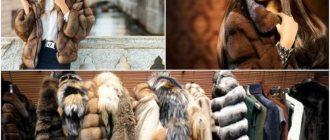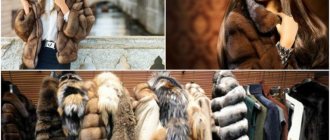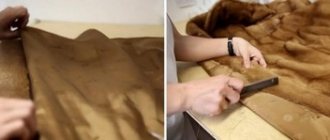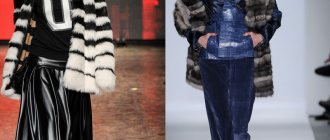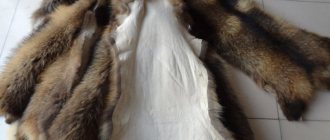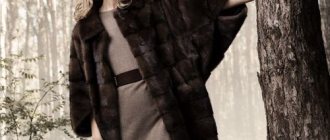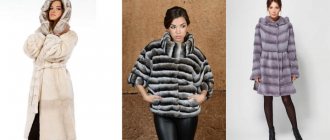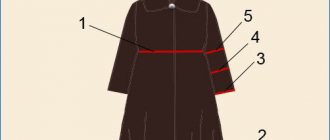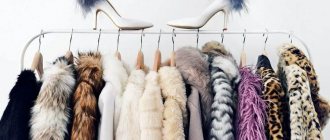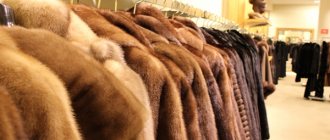With the onset of the winter season, many women are faced with the question of which animal fur coat is best to buy. Each of these materials has its own advantages and disadvantages, so beautiful ladies are often lost. So, some fashionistas like a nutria fur coat, but they don’t know whether this product really gives comfort.
Sheared, plucked or natural nutria fur
Natural and whole nutria fur is highly wear-resistant and has water-repellent properties. At the same time, it can look rough, especially when it comes to light pearlescent skins: the long hairs are quite thick and hide the entire undergrowth. To give the products a more expensive look, long hairs are cut or plucked. These are labor-intensive and rather complex procedures, which is why such fur is more expensive, however, compared to solid fur, its characteristics are noticeably worse.
Sheared fur takes on an elegant and velvety appearance without being too shiny. If you run your hand against the fur, you can feel the prickly “stumps” that remain after cutting long hairs. These wool residues protect the undercoat, have water-repellent properties and increase the durability of the coat. Plucked fur differs from sheared fur in that the long fibers are plucked from the roots rather than cut. After pinching, only a soft, delicate undercoat remains on the skin, which needs to be trimmed and put in order. This is a very painstaking procedure that requires high professionalism from the master, which is why plucked nutria is the most expensive. Sheared and plucked fur retains heat less well, but looks more stylish and expensive. According to reviews, nutria fur coats with long pile are warmer.
Types of nutria
The color of animals living in nature is brown with various shades. Modern breeders have bred nutria with skins of various colors, which are especially in demand for sewing expensive outerwear.
Main types of nutria:
- standard - the most common;
- Azerbaijani – white fluff and awn;
- Italian – white fur with a cream tint;
- silver – gray color with shades, bluish underfur;
- mother-of-pearl – beige hair, creamy blue underfur;
- beige – beige hair and dark underfur;
- golden - golden hair and yellowish underfur with shades;
- pastel – color varies from light to brown;
- black – dark hair and gray underfur;
- lemon - yellow hair and undergrowth.
Regular
White
Italian
Silver
Mother of pearl
Beige
Black
Lemon
Benefits of nutria fur coats
Nutria is a waterfowl, so the fur is distinguished from others by its excellent water-repellent properties: such a fur coat is not afraid of either rain or snow. If you get caught in bad weather, you don’t need to worry that the fur will deteriorate, moisture rolls off the fibers, and the skin itself remains dry. Nutria also has good wear resistance; when worn carefully, the fur coat does not lose its beautiful appearance for five to six years, and sometimes longer. According to customer reviews, a fur coat made from nutria is light, even if the product is long. Another important advantage is the price of a fur coat. It looks a little different from mink, but costs 2-3 times less.
Rules for caring for fur products
To maintain the chic appearance of fur clothing, you need to follow certain care rules, which will allow you to wear a fur coat for more than one season.
Natural nutria fur is quite moisture resistant. However, if the fur coat still gets wet, then it is enough to hang it in a ventilated area, preferably away from heating appliances.
As a rule, any fur product instantly absorbs odors. Therefore, it is not recommended to spray air fresheners or eau de toilette near it. And if we take into account the chemical component of perfumes and other substances, then it is important to protect the fur from such effects.
Regardless of the quality and type of fur, it is prohibited to wash a fur coat. If it gets dirty, just use a damp cloth without adding chemicals.
If the fur is matted, you need to carefully disassemble the formed lump with your hands, and then carefully comb the area.
Careful, careful operation and timely care are the basic rules for caring for a fur coat made from sheared nutria.
Disadvantages of a fur coat
According to reviews from owners, a fur coat made from nutria is not particularly warm, and cut and plucked fur retains heat less well than whole fur. This outfit is suitable for light frosts down to -15 ° C, and in colder weather it is better to change into a silver fox or down jacket. You can insulate the fur with an additional lining made of padding polyester or other similar material. If you plan to wear a fur coat with thick sweaters, you need to choose a more spacious style. For temperate climates with mild winters, nutria is ideal.
Who is nutria fur suitable for?
Solid fur looks strict and respectable, which is why designers recommend wearing nutria fur coats to adults, mature ladies. For young girls, a model made from sheared or plucked skins is more suitable, as this option looks more elegant and delicate. According to reviews, a nutria fur coat with processed fur becomes lighter, softer and drapes better, so you can safely choose voluminous styles. Such models will especially appeal to plus-size girls: nutria fur does not make you look fat.
Designers recommend that short girls choose knee-length fur coats, since a style that is too short or long will look unprofitable. For plump ladies, it is best to opt for loose fur coats without a belt: this option makes the figure slimmer, visually elongating it in height. A universal model that suits almost everyone without exception, this is a straight or slightly widened fur coat: in such an outfit any woman will look attractive and sophisticated.
Main advantages
Nutria actually has many benefits. First of all, it should be noted that her fur is very light. Thanks to this, even when choosing long models, you can feel confident and comfortable. Externally, a nutria fur coat is very similar to a beaver fur coat, the fur of which is several times more expensive, so you can be sure that the outfit will look expensive and make the right impression. It is also worth highlighting the following “advantages” of nutria:
- moisture resistance, this property is quite logical, because the animal spends almost all its time in water;
- relatively low cost;
- a wide variety of shades, the most popular of which are white and pink, which, by the way, is natural;
- durability, which in the future will raise the question of what to make from a nutria fur coat when you get tired of it.
How to care for nutria fur?
Judging by the reviews, a nutria fur coat does not require special care. Fur is not afraid of moisture, so if the outfit has been exposed to rain or sleet, it is enough to dry it on hangers at room temperature. The fur coat should also be stored in a vertical position, carefully hanging it on a trempel so that the model does not become deformed. In summer, it is necessary to treat the fur with moth repellents and hide the clothes in a cover. However, you should carefully ensure that the sleeves and hem are not pressed under any circumstances: folds will form on the fur coat, which will be very difficult to smooth out.
Positive reviews about nutria fur coats and photos of magnificent styles convince us that any woman’s wardrobe will certainly have a place for at least one such guest. Regardless of clothing style, lifestyle, age and figure, this fur will decorate its owner and highlight her strengths.
Properties of fur
Lightweight, durable, with a strong shine, fur is valued by winter clothing manufacturers. Nutria cannot exist without swimming; they are excellent swimmers in natural conditions. Their skin and fur are ideally adapted to water procedures.
A distinctive feature of nutria fur is its good water-repellent qualities. It is enough to shake a wet nutria coat, remove drops of moisture or snow from it, hang it on a hanger and dry it. The item will be completely restored to its original appearance.
The structure of the fur covering is heterogeneous. The photo of nutria fur shows long, coarse, shiny hair. Water quickly flows down them, but these awns are rare, only 5-7% of the total hair mass. The remaining part is a thick down of thin twisted hairs that retains heat.
The natural coloring of animals is brown with a slight tint. The result of breeding work was the appearance of other colors: milky, black, beige or combined.
